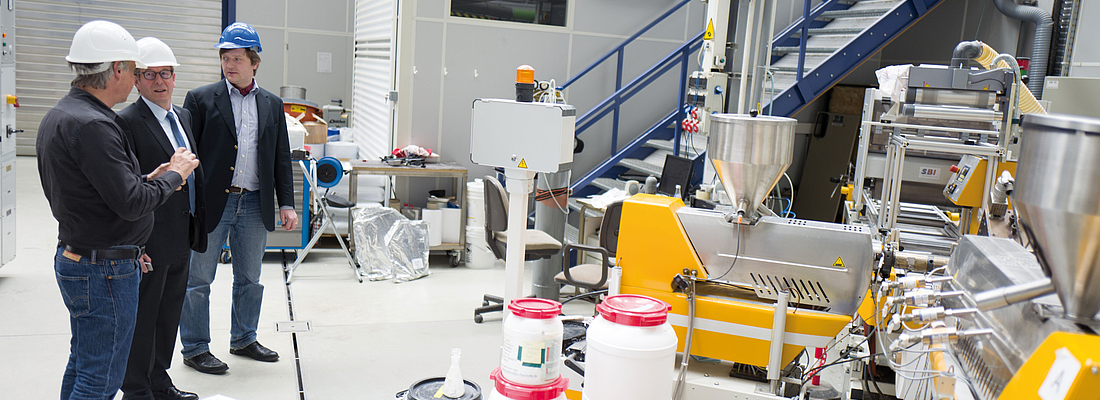

As our visit to the Fraunhofer Institute for Process Engineering and Packaging IVV made clear, packaging is exciting, versatile, complex and controversial. Fraunhofer IVV conducts research and analysis along the entire chain, from food to recycling, including food and food production, additives, packaging materials and processes, as well as recycling and recycling processes.
Packaging research and packaging-related services thus represent only one part of the wide spectrum of work conducted at Fraunhofer IVV, albeit an extensive one. In projects and workshops at schools for “small” customers, the researchers perform educational work and encounter child logic, for example: “Packaging? We can just take our own bottles and packing paper along to the supermarket!” The research carried out at the institute, on the other hand, focuses on topics such as the development of smart packaging, i.e. packaging that can tell the consumer how long the contents will remain edible. From “not necessary” to “smart packaging” – a broad field, indeed.
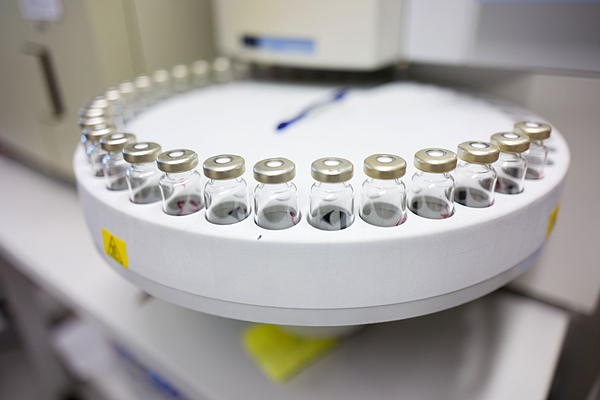
Fig 1: Headspace gas chromatograography for NIAS testing

Fig 2: Oxygen Barrier Testing
Have market requirements changed in recent years? What are the key questions today and what are the answers? As we see it, current issues are sure to find their way into the work of Fraunhofer IVV. A team of packaging experts at the institute took on our catchwords: lightweighting, renewable raw materials, barriers, migration, PET recycling, sustainable design, circular economy and smart packaging. The team consisted of Dr. Claudia Schönweitz, Deputy Director, Head of Business Development, Sven Sängerlaub, Business Development Packaging, Dr. Frank Welle, Product Safety and Analytics, and Karin Agulla, Press and Public Relations.
Schönweitz: We focus on the issues that concern the food and packaging industry as well as the issues that concern the consumer, in other words both public issues and policy issues. It’s important to briefly note how the Fraunhofer model is funded. We are a non-profit association with 50:50 funding. That means 50 percent of our funding comes from work for the industrial sector and 50 percent comes from the public sector. This allows us to maintain a neutral position and be seen as a neutral institution, while also remaining relevant for both the public and the industry.
Welle: As far as the issues that we address: In everything that is being said in the media about packaging, classic packaging concerns such as material characteristics, barriers and migration continue to play a decisive role.
Catchword: Lightweighting
Schönweitz: Lightweighting is still seen as a new topic. The goal is to reduce the amount of material used without sacrificing functional characteristics. This is not just true for PET, but also for barrier composite packaging, such as that used for coffee, crisps or peanuts. This was the challenge we faced in 2000, and it remains the challenge today. The key issue here is the quality of the metal coating, rather than the thickness of the substrate or sealing film. We previously achieved excellent results as part of a BMFT project (editor’s note: German Ministry of Research and Technology) and asked ourselves: When will this reach the market? Since then we have been interested in lightweighting in composite, flexible and rigid packaging solutions.
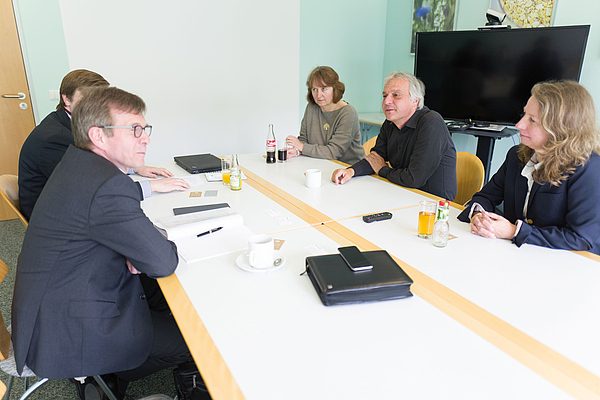
Fig 3: Dr. Claudia Schönweitz, Dr. Frank Welle, Karin Agulla (from right to left)
Catchword: Lightweighting
Schönweitz: Lightweighting is still seen as a new topic. The goal is to reduce the amount of material used without sacrificing functional characteristics. This is not just true for PET, but also for barrier composite packaging, such as that used for coffee, crisps or peanuts. This was the challenge we faced in 2000, and it remains the challenge today. The key issue here is the quality of the metal coating, rather than the thickness of the substrate or sealing film. We previously achieved excellent results as part of a BMFT project (editor’s note: German Ministry of Research and Technology) and asked ourselves: When will this reach the market? Since then we have been interested in lightweighting in composite, flexible and rigid packaging solutions.
Catchword: renewable raw materials
Schönweitz: We’ve noticed that “renewable raw materials” have again been a subject of focus in packaging development for quite some time. Barriers and sustainability also play an important role here. The key questions are: Does the use of bio-based materials improve or worsen barrier properties? Or: Are they more or less sustainable? It would be nice if there were easy answers.
Sängerlaub: The bottom line is that there is no such thing as quantum leaps in sustainability. Significant improvement would be possible if we could obtain basic substances such as ethanol from waste, but such developments take time, money and dedication. Acceptance of new approaches also takes time. Processors would, of course, prefer if there were no need to make changes to packaging, machines and processes. They would rather use the bio-based equivalents of standard plastics.
Schönweitz: Interest in using renewable raw materials for packaging is certainly growing. In terms of scale, it’s perhaps worth noting that the tasks and research focuses related to this topic are not enough to sustain us as an institute. What this means is that this is an interesting and important area of research, but in order for us continue to do work on sustainable materials – for example, on how to make packaging from the waste from food production rather than from corn or sugar cane – additional public spending is necessary.
Catchword: barriers and proteins (biogenic materials)
More and more politicians and consumers are calling for a reduction in our dependence on petrochemicals. This increases the need for alternative materials that can be produced and disposed of in a more environmentally friendly way than petrochemical-based plastics. What are the difficulties here?
Schönweitz: The following example makes clear how complex it is to develop materials and packaging: Proteins have excellent oxygen barrier properties, making them a potential replacement for traditional polymer coatings, such as ethylene vinyl alcohol (EVOH). However, the thermoplastic manufacturing process requires a high degree of temperature stability, so that further processing of protein-coated films is currently only possible to a limited extent. The challenge is to optimize the protein-based coating so that it fulfils this requirement, while also keeping in mind the entire value added chain. This includes the development and production of the formulation as well as the application and development of a suitable thermoforming process.
Sängerlaub: In order to use proteins as a barrier material, material development is needed, which is something we are working on. As an initial approach, we are using processes from food technology – where we have particular expertise – to extract and prepare proteins to be used to produce packaging.
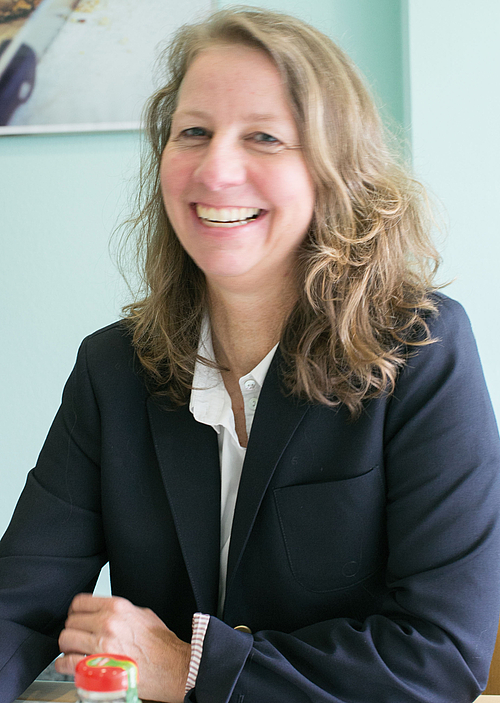
Catchword: PET-Recycling
Everything ultimately leads to recycling.
Welle: PET recycling is a success. There are companies that have been adding at least 50% PET recyclate to their mixtures for years. This is particularly efficient for large bottling companies that direct, control and regulate their own materials within a recycling economy, allowing them to sort out “foreign” bottles for separate cleaning cycles as necessary. Thanks to mandatory deposits, this type of recycling has enjoyed success in Germany. Who would have thought? However, we shouldn’t underestimate the fact that sufficient expertise is required in order to achieve optimal bottle quality in bottles with high percentages of recyclate, and success is hardly guaranteed. The necessary expertise can be bought in – that’s our bread and butter. As I said, PET recycling is a success, but the same cannot be said for cartons. Those in the carton sector could learn something from PET. The public sector must provide more funds for research related to mineral oil and cartons.
Catchword: developments due to PET recycling
Why does recycling work so well with PET?
Welle: Significantly more attention is being paid to reusability and recyclability. Take, for example, PVC labels. They disrupted recycling processes. They are no longer used, and the adhesive used for labels is water soluble, because hot-melt adhesives can cause problems. This was or is all part of the learning curve. As always, there has to be a general interest in moving such research forward. In the case of PET, stakeholders were and remain interested. PET recycling is a success story. Approximately 80 recycling companies will likely be authorized by EFSA, with each company processing 10,000 metric tons per year – a huge amount for Europe. FDA approval was an essential step for PET and certainly contributed to this development.
Catchword: Sustainable Design
The focus on reusability and recyclability prompted the development of the concept of ecodesign. The key question here is: How can package design facilitate optimal recycling? Packaging materials, label materials, printing inks, closures, etc. – everything is considered with an eye to ecodesign.
Sängerlaub: Lightweighting is also connected to ecodesign. But here there are also conflicting developments: On the one hand are the demands of lightweighting, on the other, those of migration, safety and recyclability. In other words, there are cases in which producers are happy to use more material if this will simplify or improve safety and recyclability.
Catchword: Circular economy
The circular economy approach takes this a step further. Discussions of the concept of circular economy are taking place across many different sectors, including, of course, the food and packaging sectors.
Schönweitz: Without a doubt, outlay and the value added chain are at the heart of the examinations and analyses. What is the outlay needed to eliminate even the smallest amount of a material from mixed materials, and what are the benefits of doing so? Managing streams of individually accumulating materials and using them, not in the same company, but in a related company or even a related industry – these are entirely new challenges that we have never faced before. In particular, this means that a deeper understanding of materials in connection with food is needed, along with a deeper understanding of migration. This results in significant and costly outlays for analyses.
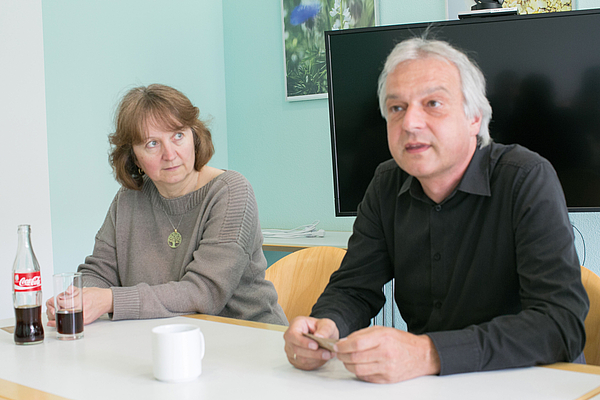
Catchword: migration and analysis
What gets measured gets done. This applies to the optimization of processes and certainly also applies to analysis. Isn’t it true that by improving measurement technology, we will be able to identify every component of a material or packaging?
Welle: The limits of detection are decreasing, because measurement today has become more sensitive. Although many aspects of analysis have remained unchanged over the past 20 years, there are some aspects that are becoming increasingly easy. This facilitates measurements: Anyone can measure, but not everyone can interpret the measurements. This becomes a problem when scientifically unsound “results” are published.
Acetaldehyde as decomposition product – this was once a huge topic. Today the EFSA does not only consider what goes into a product but also what ends up in the final product.
Welle: Yes, NIAS are a very hot issue. NIAS, or non-intentionally added substances, refers to substances that no one added to the packaging, but that can nevertheless be detected in the packaging, in other words impurities, decomposition products or contamination. In terms of PET, I consider NIAS migration to be even more critical than the migration of monomers or additives. By nature, varying concentrations of NIAS can be detected, and packaging analysts don’t even initially know what they should be searching for. In order to analyse and evaluate NIAS, very sensitive, non-target screening methods are required. And above all, it takes years of experience. We have been gathering this experience for the past 20 years, in no small part due to PET recycling, where we were tasked with evaluating the post-consumer substances that could arise. These are also considered NIAS.
Catchword: sustainability
The packaging industry has been the focus of strong criticism on several occasions in recent years. Today there is a tendency to approach environmental issues proactively, in order to demonstrate sustainability. How can sustainability be communicated to consumers?
Welle: My personal opinion is that sustainability must be a way of doing business and not just a marketing campaign. To approach sustainability proactively is surely a good idea. Communicating with the consumer is important. We have seen examples of successful – and of not so successful – communication. Education is necessary, but doesn’t always work. Take, for example, the topic of hormones in PET bottles. This comes up again and again, and is something that we are addressing in our school projects, which focus on topics such as why packaging, what is shelf life, what does our consumer behaviour require, etc. I’d like to give a positive example: Lidl’s approach to communication in a video on PET recycling and recyclable materials is helpful and very well done. (Source: www.youtube.com;
Schönweitz: Large discount supermarkets are in a better position to raise awareness and demand action from their suppliers. When it comes to sustainability, we can’t always wait for the government and the public sector to designate issues as research areas and provide funding. It’s faster when it comes from the companies in the respective value-added chain. And when several companies get behind a particular project topic, we at Fraunhofer IVV can implement collaborative projects, ideally supported by public funding.

Fig 4: Sven Sängerlaub (left)
Catchword: smart packaging
When will packaging start communicating with us?
Sängerlaub: Consumers, industry, trade and even the food itself have complex requirements on packaging, which require tailored solutions. We are well aware of this list of requirements and desires: food that looks fresh and appetizing the entire time that it is stored, the highest degree of microbiological safety with no or minimal preservatives, preservation of all valuable components (such as vitamins, flavours, ...), low transport weight, etc. Fulfilling these requirements is often a balancing act. With that said, I’d like to point to what this means in relation to active and smart packaging.
The best-before date (MHD) is not yet a thing of the past?
Sängerlaub: The elimination of the best-before date is certainly not imminent, although there have been rumours to that effect. Smart packing should include diagnostic and indicator functions, for example for leakage, time, temperature and freshness. The advantages are clear: Indicators would allow retailers and consumers to easily recognize when a consumable product has exceeded a critical limit. This makes particular sense for foods that may be exposed to various temperatures. Storage temperature plays a critical role in shelf life – see: online food sales, which seem to be a major trend. Due to the complexity of sensory analysis, among other factors, we are nowhere near “smart packaging”. We are still working on developing chemical, enzymatic, microbiological sensors. Determining when a food expires is a rather complex process. Small changes in the percentage of sugar, salt, fats and oils in food can affect shelf life. And these changes go hand in hand with a current trend to produce healthier foods. So: The end of the best-before date is not yet in sight, but we’re taking important steps in this direction.
Thank you for taking the time to talk to us.
The comPETence center provides your organisation with a dynamic, cost effective way to promote your products and services.

magazine
Find our premium articles, interviews, reports and more
in 3 issues in 2025.






